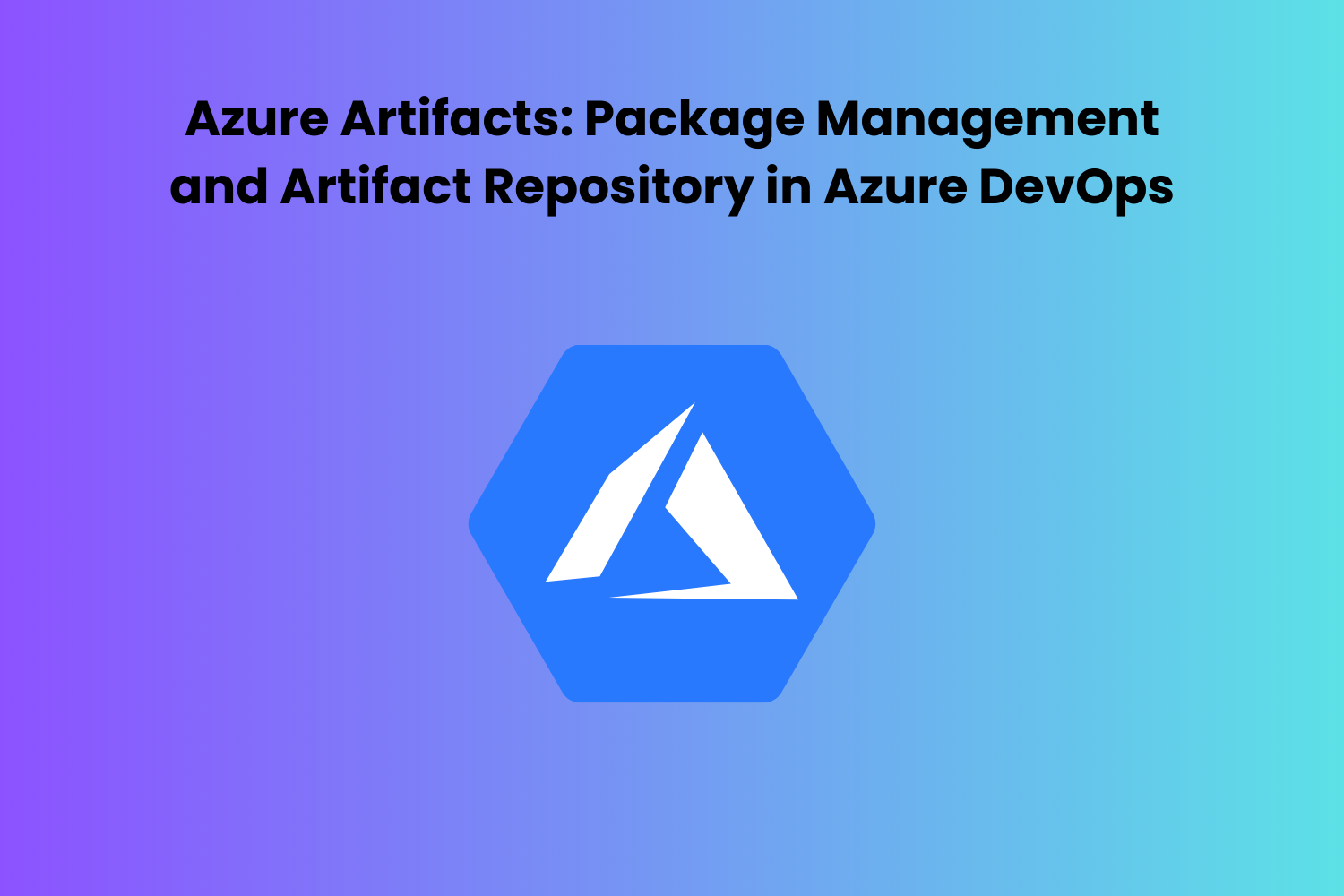
Azure DevOps is a powerful platform that provides a comprehensive set of tools for managing the entire software development lifecycle. One key aspect of this platform is Azure Artifacts, which offers a centralized package management and artifact repository solution. Azure Artifacts enables teams to efficiently manage their dependencies, share code artifacts, and streamline their DevOps processes. In this blog, we will explore the capabilities of Azure Artifacts and how it can be leveraged as a part of Azure DevOps to enhance package management and artifact repository needs for your projects and teams. Whether you’re an experienced Azure DevOps user or considering a DevOps Course to enhance your skills, understanding Azure Artifacts is essential for effective DevOps practices.
Table of Contents
- What are Azure Artifacts?
- Key Features of Azure Artifacts
- Benefits of Using Azure Artifacts
- Conclusion
What are Azure Artifacts?
Azure DevOps’s Azure Artefacts is a comprehensive package management service that facilitates the creation, hosting, and distribution of packages associated with projects by teams. The packages may consist of libraries, executables, npm modules, NuGet packages, and other components, rendering it an adaptable solution for dependency management across various project types. By providing a centralised repository for these products, Azure Artefacts facilitates team access to and utilisation of them throughout their development workflows.
Key Features of Azure Artifacts
Package Management: Azure Artifacts provides a secure and scalable package management solution that allows teams to create and publish packages from their build pipelines. This functionality allows teams to exercise version control over their products, oversee dependencies, and verify that the appropriate versions of dependencies are utilised in their projects.
Artifact Repository: Azure Artifacts acts as a central artifact repository for storing build artifacts, such as compiled binaries, build outputs, and other artifacts generated during the software development process. This functionality enables teams to uphold a record of their construction progress and effortlessly exchange artefacts throughout various pipelines and projects.
Integration with Azure DevOps: Azure Artifacts is tightly integrated with Azure DevOps, allowing seamless integration with other services such as Azure Pipelines, Azure Repos, and Azure Boards. By integrating package management and artefact repository functionalities directly into DevOps workflows, this integration guarantees a streamlined and effective development process for teams.
Support for Multiple Package Types: Azure Artifacts supports various package formats, including npm, NuGet, Maven, Python, and Universal Packages, making it suitable for a wide range of development technologies and platforms. The aforementioned adaptability empowers teams to utilise Azure Artefacts as a cohesive package management solution across all their projects, irrespective of the underlying technology architecture.
Benefits of Using Azure Artifacts
Streamlined Package Management: Azure Artifacts simplifies the management of dependencies by providing a centralized location for storing and sharing packages. By doing so, the likelihood of version conflicts is diminished and it is guaranteed that teams are utilising approved and consistent versions of dependencies throughout their projects.
Improved Collaboration: By providing a shared repository for packages and artifacts, Azure Artifacts facilitates collaboration among development teams. The ability for teams to readily access and utilise packages that have been published by other teams fosters code reuse and enhances overall productivity.
Enhanced Security and Compliance: Azure Artifacts offers robust security features, such as access control and package signing, to ensure that packages are only accessed and used by authorized users. This practice aids organisations in upholding regulatory obligations and preserving the integrity of their software supply chain.
Seamless Integration with DevOps Workflows: Azure Artifacts integrates seamlessly with Azure DevOps, allowing teams to incorporate package management and artifact repository capabilities directly into their CI/CD pipelines. As a result, the DevOps workflow incorporates automated package publishing, versioning, and consumption; this reduces manual labour and increases productivity.
Conclusion
In the Azure DevOps ecosystem, Azure Artefacts, a robust package management and artefact repository solution, is indispensable. Through the utilisation of Azure Artefacts, software development teams can enhance collaboration, optimise package administration procedures, and guarantee the security and integrity of the software supply chain. Azure Artefacts knowledge is crucial for constructing dependable and effective DevOps pipelines, regardless of experience level with the platform or interest in enrolling in a DevOps course to augment one’s aptitude.
Leave a Reply